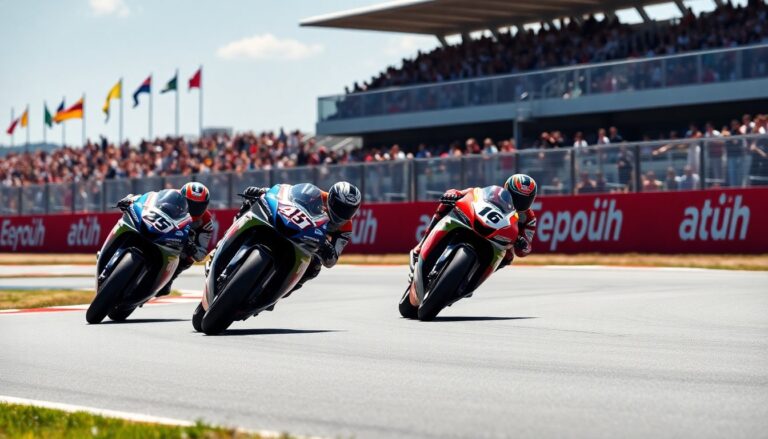Argomenti trattati
The MotoGP championship represents the pinnacle of motorcycle racing, captivating fans with its combination of speed, skill, and high-stakes competition. Since its inception in 1949, this exhilarating sport has evolved into a global phenomenon, showcasing the world’s best riders and manufacturers in an intense battle for supremacy. Each season, MotoGP presents thrilling races that not only test the riders’ abilities but also highlight the intricate engineering behind their machines.
From the roar of engines to the smell of burnt rubber, the atmosphere at a MotoGP event is electric. Fans flock to tracks worldwide, eager to witness the spectacle firsthand. As the sport continues to grow, so do the technology and strategy involved, making it imperative for both riders and teams to stay ahead of the curve.
The evolution of MotoGP technology
One of the most fascinating aspects of MotoGP is the relentless pursuit of technological advancement. Over the years, the sport has witnessed significant innovations that have transformed the racing experience. The introduction of electronic control units (ECUs) has revolutionized how motorcycles are tuned and adjusted during races. These sophisticated systems allow teams to optimize performance in real-time, adapting to changing track conditions and rider inputs.
Tire technology
The tire compounds used in MotoGP are another critical area of development. Manufacturers such as Michelin and Bridgestone invest heavily in research to produce tires that provide maximum grip while ensuring durability. Riders must understand their tire performance, as it directly impacts their lap times and overall race strategy. Knowing when to push and when to conserve is a skill that differentiates the best from the rest.
Aerodynamics and bike design
Aerodynamic efficiency is paramount in MotoGP, with teams continuously refining the shapes of their bikes to minimize drag. The fairings of a motorcycle are meticulously designed to enhance airflow, allowing riders to achieve higher speeds on straights while maintaining stability in corners. This delicate balance showcases the engineering prowess within the sport.
The mental game of MotoGP
While technology plays a significant role in MotoGP racing, the mental aspect cannot be overlooked. Riders face immense pressure as they navigate high-speed circuits, often at the limits of their physical and mental capacities. The ability to maintain focus and composure in the face of adversity is crucial for success.
Moreover, the strategic element of racing adds another layer to the mental game. Riders and their teams must analyze data from previous races and practice sessions to devise the best approach for each event. This includes understanding competitors’ strengths and weaknesses, managing tire wear, and making split-second decisions during races.
Rider psychology
The psychological state of a rider can significantly influence their performance. Techniques such as visualization and mindfulness are increasingly being employed to enhance concentration and mental resilience. Riders often visualize their race, imagining each turn and overtaking maneuver, which helps them build confidence and reduce anxiety.
Team dynamics
MotoGP is not solely about the rider; it is a team sport at its core. Each team comprises a diverse group of individuals, including engineers, mechanics, and strategists, all working cohesively towards a common goal. Effective communication and collaboration are essential for success. The synergy between rider and team can make or break a race, as they must adapt to changing circumstances quickly.
The future of MotoGP
As the future unfolds, MotoGP appears poised for continued growth and evolution. With an increasing emphasis on sustainability, the championship is exploring alternatives such as electrification and the use of renewable resources. This shift not only addresses global environmental concerns but also opens up new avenues for innovation within the sport.
From the roar of engines to the smell of burnt rubber, the atmosphere at a MotoGP event is electric. Fans flock to tracks worldwide, eager to witness the spectacle firsthand. As the sport continues to grow, so do the technology and strategy involved, making it imperative for both riders and teams to stay ahead of the curve.0
From the roar of engines to the smell of burnt rubber, the atmosphere at a MotoGP event is electric. Fans flock to tracks worldwide, eager to witness the spectacle firsthand. As the sport continues to grow, so do the technology and strategy involved, making it imperative for both riders and teams to stay ahead of the curve.1

